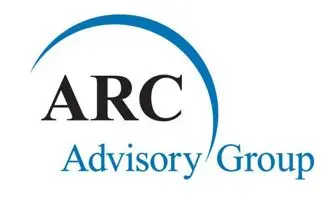

 In the rapidly evolving landscape of the transportation sector, the integration of Vehicle-to-Vehicle (V2V) and Vehicle-to-Everything (V2X) communications stands out as a transformative development. These technologies, while sophisticated in their design, have profound implications for sustainability, logistics, and the global energy transition paradigm.
In the rapidly evolving landscape of the transportation sector, the integration of Vehicle-to-Vehicle (V2V) and Vehicle-to-Everything (V2X) communications stands out as a transformative development. These technologies, while sophisticated in their design, have profound implications for sustainability, logistics, and the global energy transition paradigm.
Let’s first look at the three pillars of sustainability:
1. The Three Pillars of Sustainability
a. Environmental Stewardship:
V2V and V2X: Leveraging these systems can lead to a significant reduction in vehicular emissions by optimizing traffic flow. By minimizing congestion, vehicles spend less time idling, leading to decreased fuel consumption. The environmental benefits extend beyond just reduced pollutants, signaling a shift towards greener transportation.
b. Societal Impact:
V2V: The capability for vehicles to communicate their trajectories and positions can drastically reduce collision risks. This enhances road safety by preventing potential accidents, especially in challenging traffic scenarios. The broader societal benefit is a safer transportation environment for all road users.
V2X: By interfacing with infrastructure and pedestrians, this technology offers a holistic approach to road safety. Vehicles can now "communicate" with traffic lights, signs, and even pedestrians, ensuring comprehensive situational awareness. This interconnectedness promises to revolutionize how vehicles interact with their surroundings.
c. Economic Viability:
V2V and V2X: The economic implications of these technologies are dramatic. Reduced congestion and vehicular incidents can lead to substantial savings, not just in terms of fuel economy but also in healthcare costs from potential accidents. Additionally, smoother traffic flow can lead to increased productivity as goods and services move more efficiently.
2. Logistics and Fleet Management: A New Paradigm
a. Operational Excellence:
V2V and V2X: The ability to acquire real-time traffic data allows for unparalleled route optimization. This ensures fuel efficiency, reducing operational costs for logistics companies. Furthermore, timely deliveries become more predictable, enhancing customer satisfaction and trust. V2V enables true fleet platooning offering enhanced aerodynamics that drives a reduction of energy usage
b. Safety Protocols:
V2V and V2X: These technologies provide near real-time notice of road hazards. Advanced communication systems can preemptively identify and communicate potential threats, ensuring that fleet operations are conducted under the highest safety standards. This not only protects the cargo but also ensures the safety of fleet personnel.
c. Predictive Maintenance:
V2V and V2X: The continuous monitoring capabilities of these systems ensure timely vehicle maintenance. By predicting when a vehicle may need repairs or servicing, fleet managers can optimize vehicle longevity and readiness. This proactive approach reduces downtime and ensures that fleets remain operational.
3. The Global Energy Transition: A Vehicular Perspective
a. Electrification and Grid Synergy:
V2X: As we transition towards an electrified vehicular landscape, V2X emerges as a foundational technology for intelligent charging protocols. Vehicles can communicate with charging stations, ensuring they draw power during off-peak hours. This seamless integration with renewable energy sources promises a more efficient and sustainable energy grid.
b. Grid Stability:
V2X: Electric vehicles, when integrated into the grid, can provide energy during peak demand. This bi-directional energy flow ensures grid equilibrium, preventing potential blackouts during high demand periods. As more vehicles become electric, this grid-vehicle synergy will play a crucial role in maintaining energy stability.
c. Transitioning Away from Carbon Based Fuels:
V2V and V2X: These technologies are instrumental in our endeavor to reduce global reliance on fossil fuels. By enhancing transportation efficiency and bolstering the shift towards electric vehicles, we move closer to a sustainable energy future. This marks a significant stride away from traditional energy sources towards more sustainable alternatives.
The integration of V2V and V2X technologies represents more than just an advancement in vehicular communication. It's a true demonstration of the industry's commitment to pioneering sustainable transportation solutions and driving the global energy transition. As industry professionals, it's imperative for us all to recognize and harness the potential of these transformative technologies.

